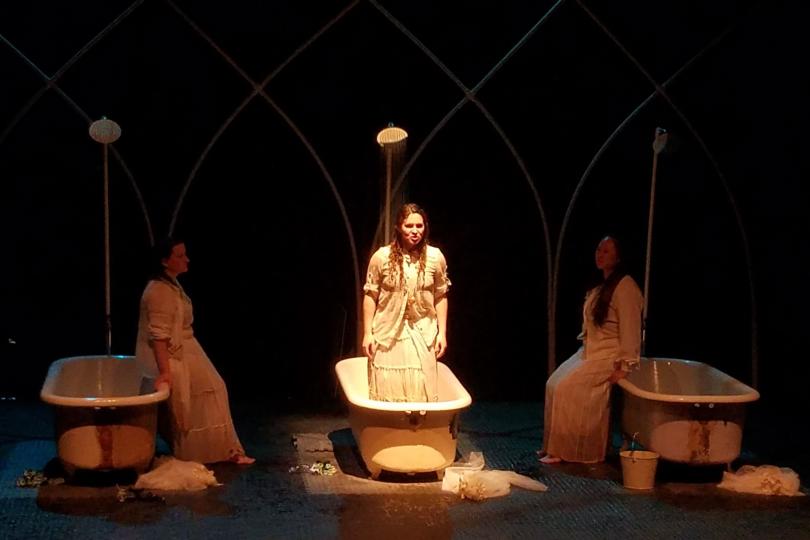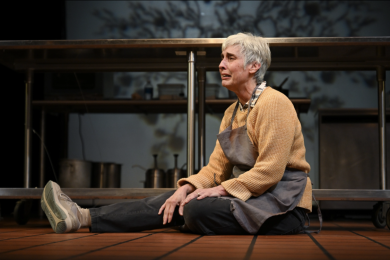Men are afraid women will laugh at them...

Walking into the Crane, you will immediately hear the water before you see it. Turning right into the staging area itself, The Drowning Girls is minimal but evocative: three old-fashioned, clawfoot tubs sit in squares of bluish light. For the pre-show, their shower heads run, causing a slight humidity and setting up the watery tale of naiveté, opportunism, and callous, calculating murder.
When our drowned brides eventually rise from their tubs, they are comic, playful, and very much themselves. They are not haunting specters, but just women -- women who (seemingly) have had time to reflect on the circumstances that caused their untimely deaths. They are all incredibly angry about their murders, but through their comradery with each other they seem still able to recognize the macabre humor in their situations. The Drowning Girls does an excellent job positioning their murders as highly cultural (all three women felt an unreasonable pressure to get married, which lead them to make hasty decisions about George Joseph Smith) without neglecting or hand-waving away Smith’s horrific decision to kill them for their money. It also provides space for the characters to be themselves without becoming martyrs or too one-note. Unlike many murder mysteries, the reason these women were murdered wasn’t because George Joseph Smith was a genius or even a particularly interesting criminal. The Drowning Girls makes the case that the society these women lived in made their choice of him seem less irrational and made them (and presumably other women) perfect targets for monsters like him.
In this production, I thoroughly enjoyed the playfulness of the actresses -- loyal Bessie (Megan Kim Anderson), is Smith’s first wife. He waits a long time to kill her. Exuberant Alice (Heather Burmeister) is the youngest of his victims and even in the afterlife has the most energy. Smith’s final victim is the considerably older and warier Margaret (Danielle Krivinchuk), who cannot forgive herself for the whirlwind romance with Smith (who ended up killing her after only a single day of marriage). A play comprised of only three actresses and yet *many* characters, they all take turns dancing and dripping around the stage, playing different parts in each other’s’ stories. Anderson, Burmeister, and Krivinchuk have amazing chemistry together, and bring humor and vitality to their roles. Their laughter and play acting remind me of the March girls in Little Women or the Bennet sisters in Pride and Prejudice. Of course, in those stories the silly girls mostly get happily ever afters and generally caring husbands; Bessie, Alice, and Margaret were not so lucky.
The script itself is a bit confusing at times, and the fact that Smith’s name and story change can make parts of it hard to follow. While there are parts played for bigger laughs (such as the police investigation scene) this play shines when it is the women laughing at Smith. After all, such laughter is perhaps the best medicine, and it is certain to give Smith the biggest sting.




